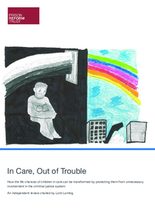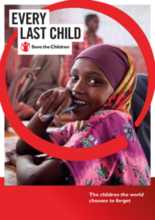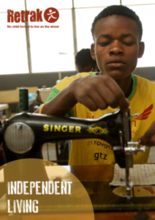Displaying 311 - 320 of 505
Large scale studies published in the 1990s and early 2000s generally showed that significant educational disparities existed based on orphan status and a child's relationship to the head of the household. Since the data relied on by these studies were collected, the global community has conducted major campaigns to close these gaps, through the Education for All (EFA) and Millennium Development Goals (MDGs). This study examined these factors using eight country-years from five sub-Saharan African countries (Malawi, Mozambique, Niger, Uganda, and Zimbabwe).
This is a 15 month qualitative study involving semi-structured interviews with families and boys at three stages: preparing for return, in the first three months of reintegration and successfully reintegrated.
This is an explorative study undertaken in central and south part of the Mumbai with the objective of investigating socio-economic, demographic and cultural characteristics of street adolescents in Mumbai.
This review was established to examine the reasons for, and how best to tackle, the over representation of children in care, or with experience of care, in the criminal justice system in England and Wales.
This report describes the situation and experience of families during the economic crisis and examines how family-focused policies have changed since 2010 in the European Union.
This report tells the story of “forgotten children,” children who are relegated to the margins of society due to discrimination and subjected to the hardships of poverty. The report is aimed at identifying what is required to meet the needs of these children and to ensure their basic rights to survive and thrive, to learn, and to be protected.
This Country Fact Sheet from Moldova reports that since 2007, the number of children in institutional care has dropped from 12,000 to 2,214.
Retrak has released a literature review on independent living programmes in an effort to understand the needs of young people coming of age on the streets.
This study in India sought to develop the SAFE Checklist in order to assess site-level threats to child protection among children and families living in settings of adversity. The tool was field tested in two diverse sites in India (a construction site and a railway station) and the results demonstrated that the SAFE Checklist is a sensitive tool that captured the differences between the two sites from the standpoint of core child protection issues.
This animated video from Lumos, narrated by Lumos founder J.K. Rowling, illustrates the “tragic consequences of orphanage care,” and argues that more can and should be done to support families to care for their children, eliminating the use of institutional care.







